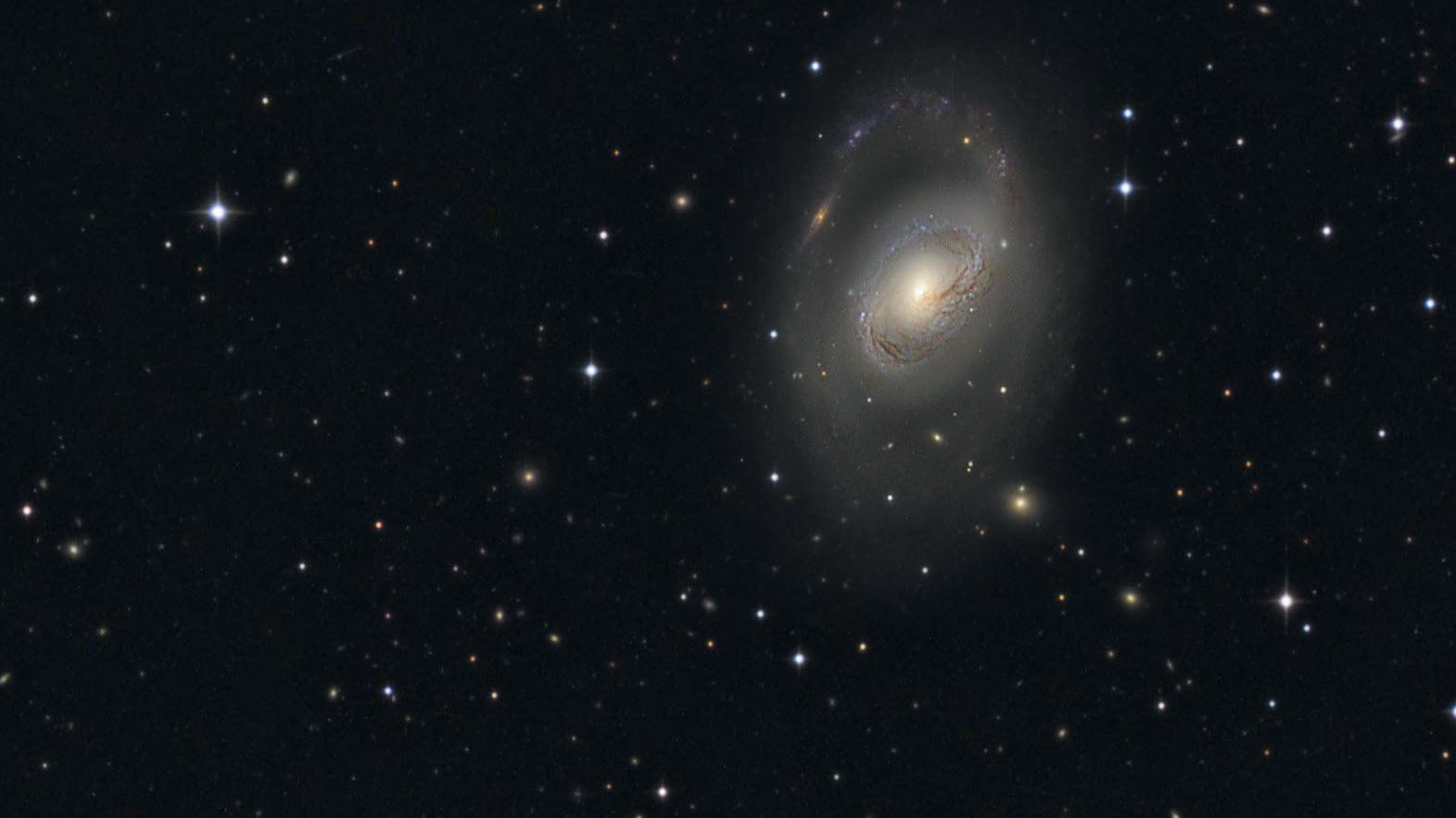Two sister galaxies
M95 and M96 are among the highlights in the galaxy hunting ground that is Leo. The spiral structure of M96 was identified as early as 1850.
 M96 is the brightest member of the group of galaxies of the same name. Stefan Heutz, Wolfgang Ries / Johannes Schedler / CCD Guide
M96 is the brightest member of the group of galaxies of the same name. Stefan Heutz, Wolfgang Ries / Johannes Schedler / CCD GuideThe constellation of Leo is a classic hunting ground for galaxy observers. The NGC and IC catalogues alone list more than 700 galaxies that are to be found here. Most of them are faint, but the 22 objects up to magnitude 11 alone are worth a visual journey of discovery. Messier 95 and 96 are among the absolute highlights.
 M 95 is just as interesting. Stefan Heutz, Wolfgang Ries / Johannes Schedler / CCD Guide
M 95 is just as interesting. Stefan Heutz, Wolfgang Ries / Johannes Schedler / CCD GuideThe French astronomer Pierre Méchain discovered M96 together with M95 on the night of 20 March 1781. Messier was able to verify the discovery on 24 March 1781, and described the galaxy as a "nebula without a star." He compared the appearance of M95 and M96 to the pair M84 and M86 in the constellation of Virgo. In 1850, M96 was listed as one of 14 nebulae in which a spiral structure could be detected with the gigantic 1,800-mm telescope built by Lord Rosse. First signs of the structure had already been noticed by other observers. John Herschel described the galaxy as "structured" in 1826. The structure even led D’Arrest to the assumption that it was a resolvable star cluster.
The highlight of an entire group of galaxies
 M96, as it appears in a 400-mm telescope
under a country sky. Uwe Glahn
M96, as it appears in a 400-mm telescope
under a country sky. Uwe GlahnM96 is the brightest member of the M96 group, which includes M95 together with M105, NGC 3384 and other fainter galaxies. Its distance, which could be determined relatively precisely with the help of the bright Cepheids, red giants and the supernova 1998bu in M96 which was discovered in May 1998, is 35 million light-years. The arms of M96 appear asymmetrical, which could be an indication of previous encounters with its neighbouring galaxies.
However, recent studies show no intergalactic material around M96 and M95 which would indicate such an interaction. The northern arm and the core are strewn with numerous HII regions and thus are the birthplace of new stars.
For details you need a medium-sized telescope
 M95, as it appears in a 400-mm telescope
under a country sky. Uwe Glahn
M95, as it appears in a 400-mm telescope
under a country sky. Uwe GlahnThe galaxies are located in the middle of an imaginary line connecting α and θ Leonis. Even with binoculars a small faint nebulous spot can be seen. In a small telescope, M96 is the brightest object of the group of galaxies and comparisons with M95 are interesting. M96 appears noticeably brighter and is more clearly defined.
Further north, the bright pair M105/NGC 3384 is also visible with a small telescope. From a 300-mm to 350-mm aperture, at medium magnification you can look for dark structures and the beginning of the spiral structure in the core area. A challenge for large telescopes and astrophotographers are the outer spiral arms as well as the fainter accompanying and background galaxies.
 Besides M95 and M96, further galaxies are located in the immediate vicinity,
M105 and NGC 3384. J. Scholten
Besides M95 and M96, further galaxies are located in the immediate vicinity,
M105 and NGC 3384. J. Scholten Author: Matthias Juchert / Licence: Oculum-Verlag GmbH
